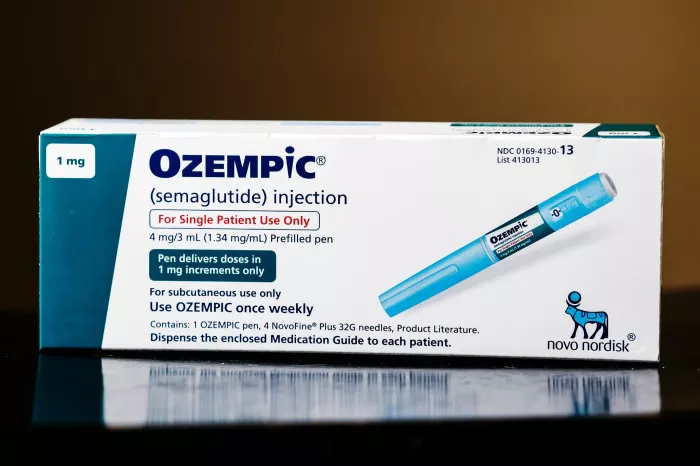Food allergies, with their diverse manifestations and impacts on health, necessitate accurate and reliable testing methods for effective management. In this comprehensive exploration, we embark on a journey to unveil the intricacies of food allergy testing, focusing on the quest for the most accurate food allergy test. From traditional approaches to cutting-edge diagnostics, we navigate the landscape to discern which methods offer precision in identifying food allergies and guiding individuals toward informed dietary choices and health management.
Understanding the Complexity of Food Allergies
Before delving into the realm of food allergy testing, it is imperative to comprehend the intricate nature of food allergies. These immune-mediated responses to specific proteins in foods can range from mild to severe, posing challenges in diagnosis and necessitating reliable testing methods. As we explore the landscape of food allergy testing, the foundational understanding of the complexity of food allergies sets the stage for discerning the most accurate diagnostic approaches.
Conventional Allergy Testing Methods
Conventional allergy testing methods have long been employed to identify food allergies, forming the historical backdrop of diagnostic approaches. Skin prick tests and blood tests, such as the specific IgE test, have been stalwarts in the arsenal of allergists. Understanding the historical context of these methods provides insights into their evolution and sets the stage for evaluating their accuracy in the contemporary landscape of food allergy diagnostics.
Skin Prick Tests
Skin prick tests, a conventional and widely used method, involve introducing small amounts of allergenic extracts into the skin to assess the body’s immune response. As we delve into the intricacies of skin prick tests, evaluating their accuracy and limitations becomes paramount. The dynamics of skin prick tests in identifying specific food allergies and their role in the broader context of allergy diagnostics shape our understanding of their place in the spectrum of testing methodologies.
Blood Tests for Food Allergies
Blood tests, particularly the specific IgE test, contribute significantly to the landscape of food allergy diagnostics. By decoding immunoglobulin responses to specific food proteins, these tests aim to pinpoint allergens triggering immune reactions. Exploring the nuances of blood tests, their reliability, and the information they offer about the spectrum of food allergies adds depth to our understanding of the most accurate diagnostic approaches.
Component-Resolved Diagnostics
In the quest for precision, component-resolved diagnostics emerge as a cutting-edge approach to food allergy testing. This method dissects allergenic components within foods, providing granular insights into the specific proteins triggering immune responses. As we unravel the potential of component-resolved diagnostics, assessing their accuracy and role in personalized allergy management becomes a focal point in the evolution of food allergy testing.
Oral Food Challenges
Oral food challenges, often considered the gold standard in food allergy diagnosis, involve controlled exposure to suspected allergens under medical supervision. While this method offers a direct and real-world assessment of allergic reactions, its practicality and safety considerations warrant scrutiny. Navigating the landscape of oral food challenges provides a comprehensive view of their role in confirming or refuting food allergies and their status as a benchmark for accuracy.
Emerging Technologies
The landscape of food allergy testing is undergoing transformation with the advent of emerging technologies. From microarray-based testing to advanced molecular diagnostics, these technologies promise enhanced accuracy and a deeper understanding of the immune responses to food proteins. Investigating the frontiers of emerging technologies in food allergy testing illuminates the potential for more precise diagnostics in the quest for the most accurate test.
Challenges and Considerations: Interpreting Test Results with Caution
While advancements in food allergy testing bring new possibilities, challenges and considerations abound in interpreting test results. False positives, false negatives, and the influence of individual factors on test outcomes underscore the need for a nuanced approach. Understanding the challenges associated with food allergy testing ensures that individuals and healthcare providers interpret results with caution and make informed decisions based on a comprehensive assessment.
Navigating Personalized Allergy Management
The journey toward accurate food allergy testing extends beyond receiving test results. Navigating personalized allergy management involves translating test findings into actionable insights for individuals. From creating tailored dietary plans to implementing allergen avoidance strategies, the integration of test results into everyday life forms a crucial aspect of the broader goal of enhancing health and well-being.
Conclusion
In conclusion, the quest for the most accurate food allergy test unfolds as a dynamic exploration of traditional methods, innovative approaches, and emerging technologies. Each testing modality contributes unique insights to the intricate landscape of food allergies, and their accuracy is contextualized within the broader spectrum of diagnostic challenges. Deciphering the code of accuracy in food allergy testing involves a multifaceted understanding of the strengths, limitations, and evolving frontiers of diagnostic methodologies. As we navigate this landscape, the pursuit of precision in identifying and managing food allergies remains at the forefront, shaping the future of allergy diagnostics and personalized healthcare.
[inline_related_posts title=”You Might Be Interested In” title_align=”left” style=”list” number=”6″ align=”none” ids=”3680,3678,3676″ by=”categories” orderby=”rand” order=”DESC” hide_thumb=”no” thumb_right=”no” views=”no” date=”yes” grid_columns=”2″ post_type=”” tax=””]
































